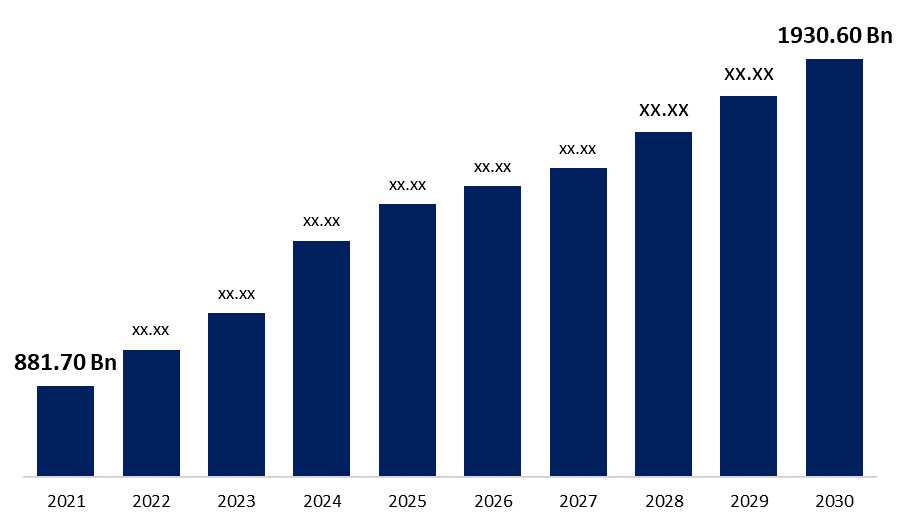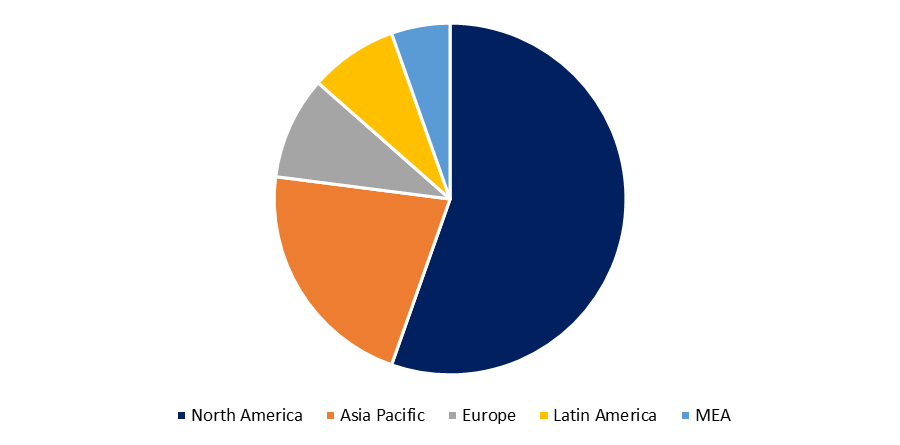Global Renewable Energy Market Size to Grow USD 1930.6 Billion By 2030 | CAGR of 8.5%
Category: Energy & PowerGlobal Renewable Energy Market Size to Grow USD 1930.6 Billion By 2030
The Global Renewable Energy Market was valued at USD 881.70 billion in 2021 and is expected to reach USD 1930.60 billion by 2030, growing at a CAGR of 8.50 % during 2021-2030. as per the latest research report by Spherical Insights & Consulting.

Get more details on this report -
The potential for rising renewable energy consumption, combined with the electrification of transportation and expanded participation in the electrical value chain by industrials and oil and gas businesses, is hastening industry convergence. Renewable growth could pick up in 2021 as the new administration begins to implement a platform that includes rejoining the Paris Climate Accord, investing $2 trillion in clean energy, and fully decarbonizing the power sector by 2035 in order to achieve a larger goal of net-zero carbon emissions by 2050.
Browse key industry insights spread across 215 pages with 115 market data tables and figures & charts from the report "Global Renewable Energy Market Size, Share & Trends, COVID-19 Impact Analysis Report, By Sector (Solar Power, Wind Power, Bio-Power, and Others), By Application (Utility-Scale, Commercial/Industrial, and Residential), and By Region (North America, Europe, Asia-Pacific, Latin America, Middle East, and Africa), Analysis and Forecast 2021 – 2030." in detail along with the table of contents https://www.sphericalinsights.com/reports/renewable-energy-market
A new administration is anticipated to use its executive power to speed up the implementation of renewable energy. Powers over emissions, public lands, and procurement, foreign affairs, commerce, and agency nominations may be included. Supportive federal policies might assist expedite timeframes for further development into other technologies, such as better batteries and other types of storage, offshore wind, and green hydrogen technology, for an industry that has relied mainly on solar and wind. As these new technologies, particularly green hydrogen generation and storage, reach commercialization, it may see an increase in power-to-x projects to store, convert, and reconvert excess solar and wind energy into carbon-neutral fuels and chemicals.
Mexico is a country defined by its usage of hydrocarbon energy. The economy, government finances, politics, traditions, and substantial portions of the population all regard oil as a vital base, and the oil and gas industry's influence is visible in many spheres. Mexico as a country has amassed enormous wealth from oil, but this money has been ineffectively utilized due to corruption and bad planning, two curses that afflict the Mexican economy. Although oil output is now dropping, it is likely that oil and gas will continue to dominate the hydrocarbon industry in the coming decades, either through the state-owned monopoly or through competition.
However, Mexico must also be viewed as a country with significant potential in renewable energy sources. While regional and worldwide attention has properly centered on Brazil as an emerging renewable energy superpower in recent years, Mexico has been viewed (again correctly) as a country that has not done enough to support the development of the renewable energy sector. The energy debate in Mexico has been driven by the economic and political challenges in the hydrocarbon sector, while the media, policymakers, and many academics have mostly disregarded the sector.
The potential for increased renewable energy consumption, as well as electrification of the transportation and industrial sectors, as well as intentions by oil and gas corporations to boost participation in the electrical value chain, are hastening energy industry convergence. These tendencies may encourage collaboration, which may lead to the development of new business models and the advancement of the energy transition. Despite the advent of a global pandemic and an economic slump in 2020, states, cities, utilities, and corporations continued to announce or pursue decarbonization initiatives. Even in the absence of a formal incentive for green infrastructure construction in the economic stimulus measures enacted in response to COVID-19, clean energy demand in the United States remained resilient, as renewables and storage saw dropping costs while capacity and consumption factors increased. Furthermore, when electricity consumption fell this year, renewables pushed out traditional electricity producing options. As of early December, renewables had outperformed coal in generation for 153 days, compared to 39 days in 2019. According to the US Energy Information Administration (EIA), power usage would likely decrease by 3.9 percent in 2020 and increase by 1.3 percent in 2021.
In contrast to other energy sources, which are concentrated in a small number of nations, renewable energy resources and major prospects for energy efficiency exist throughout large geographical areas. Rapid deployment of renewable energy and energy efficiency, as well as technical diversification of energy sources, would result in considerable economic and energy security benefits. It would also reduce environmental pollutants, such as air pollution generated by the combustion of fossil fuels, enhance public health, reduce early mortality due to pollution, and save associated health expenditures of hundreds of billions of dollars annually in the United States alone. Several assessments of decarbonization initiatives in the United States have revealed that quantifiable health benefits can greatly balance the costs of implementing these strategies. Renewable energy sources that derive their energy from the sun, either directly or indirectly, such as hydro and wind, are expected to be able to supply humanity with energy for nearly another billion years, after which the predicted increase in heat from the Sun is expected to make the Earth's surface too hot for liquid water to exist.

Get more details on this report -
Asia Pacific is expected to have a high CAGR in the global market in the future. Power consumption in countries such as China and India has increased significantly as a result of increased investment in renewable energy projects. According to the International Business Environment Forum, foreign direct investment (FDI) inflows into India's non-conventional power sector totaled US$ 10.28 billion between April 2000 and June 2021. (DPIIT). Over US$ 42 billion has been invested in India's renewable energy sector since 2014.
About the Spherical Insights & Consulting
Spherical Insights & Consulting is a market research and consulting firm which provides actionable market research study, quantitative forecasting and trends analysis provides forward-looking insight especially designed for decision makers and aids ROI.
Which is catering to different industry such as financial sectors, industrial sectors, government organizations, universities, non-profits and corporations. The company's mission is to work with businesses to achieve business objectives and maintain strategic improvements.
CONTACT US:
For More Information on Your Target Market, Please Contact Us Below:
Phone: +1 303 800 4326 (the U.S.)
Phone: +91 90289 24100 (APAC)
Email: inquiry@sphericalinsights.com, sales@sphericalinsights.com
Contact Us: https://www.sphericalinsights.com/contact-us
Need help to buy this report?